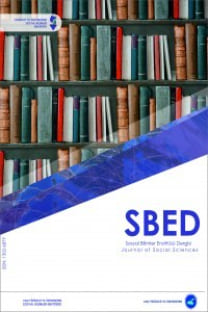A COWARD HERO IN STEPHEN CRANE’S THE RED BADGE OF COURAGE (1895)
Heroism, primarily in wars, has always been one of the focal points in the world literature. In this regard, lots of authors have produced works tackling this issue. Authors either produced their works which were based on true observations or narrations. The most important figures are the war heroes. When Stephen Crane wrote The Red Badge of Courage, a very well-known novel of American Literature, he was a fairly young guy with no war experience. Looking at the usual war novels, it is expected to draw the flawless portrait of a hero. In those plots, all the ideal heroes are to leave their family back, willingly committed and ready enough to die, perpetually suffer for their country, and never complain no matter what. This portrait has been drawn for a hero all through the course of time in our collective history of the human kind. Though quite many critics argue that out of a farm boy Crane creates a real hero at the end of the novel, named Henry Fleming, he proves to be a coward instead of a hero. The diversion of Crane is very clear in that unlike all the other war novels, he flawlessly draws the psychological portrait of a hero in questioning himself and his glorified deeds. This article presents, with all the drawbacks and upheavals of Henry’s being too much preoccupied with the idea of battle in his inner self. You are supposed to find the innovation of Crane by creating a fully human being in front of the heroic deeds either to accept or defy them unlike all the other usual war novels.
Anahtar Kelimeler:
heroism, Stephen Crane, war, drawback, courage
___
- Albrecht, R. C. (1966). Content and Style in the Red Badge of Courage. College English, 27(6), 487-492. Anderson, W. D. (1964). Homer and Stephen Crane. Nineteenth-Century Fiction, 19(1), 77-86. Andrews, J. C. (2015). South Reports the Civil War (Vol. 1278). Princeton University Press. Crane, S. (1962). The Red Badge of Courage: An Episode of the American Civil War. Dillingham, W. B. (1963). Insensibility in The Red Badge of Courage. College English, 25(3), 194-198. Hoffman, D. G., Dorson, R. M., Collins, C., & Ashton, J. W. (1957). Folklore in Literature: A Symposium. The Journal Of American Folklore, 70(275), 1-24. Johnson, R. and Clarence B. (1887). Battles and Leaders of the Civil: The Opening Battles. Vol 1, New York: Century Co. 1887-88. Kazin, A. (1956). On Native Grounds. 1942. New York: Anchor-Doubleday. Mailloux, S. (1978). The Red Badge of Courage and Interpretive Conventions: Critical Response to a Maimed Text. Studies in the Novel. 10 (1), 48-63. Weisbarger, B. (1958). The Red Badge of Courage. In Twelve Original Essays on Great American Novels, (Ed.). Shapiro, C. Detroit: 104-105; and Cox, 217-18. Wood, A. H. (2009). Crimson Blotches on the Pages of the Past: Histories of Violence in Stephen Crane’s The Red Badge of Courage. War, Literature & The Arts: An International Journal Of The Humanities. 21 (2), 38-57.
- ISSN: 1302-6879
- Başlangıç: 2000
- Yayıncı: Yüzüncü Yıl Üniversitesi Sosyal Bilimler Enstitüsü Müdürlüğü
Sayıdaki Diğer Makaleler
A COWARD HERO IN STEPHEN CRANE’S THE RED BADGE OF COURAGE (1895)
BAUHAUS’DAN BLACK MOUNTAIN KOLEJİ’NE ANNİ ALBERS DOKUMALARI
COMMODIFICATION OF NATURE IN SILA
TUNCELİ-HOZAT GEÇİMLİ KÖYÜ (ERKAYN-ENKUZİK) KİLİSESİ TAŞ SÜSLEME ÖRNEKLERİ
TÜRKİYE VE AVRUPA ÜLKELERİNDEKİ BAŞÖRTÜSÜ SORUNSALI
RÖNESANSTA, MATEMATİK İÇERİKLİ YENİ BİR SANAT BAĞLAMINDA DOĞRUSAL (LINEAR) PERSPEKTIF
YÜKSEKÖĞRETİMDE EFQM MÜKEMMELLİK MODELİ
Abdulrezzaq ALHADAD, Ertuğrul ÇAVDAR
SUÇ VE MEKAN BAĞLAMINDA GÜVEN ALGISI: VAN ÖRNEĞİ
KUTSAL ZAMAN OLARAK RAMAZAN AYININ SOKAK KÜLTÜRÜNE YANSIMASI: VAN ÖRNEĞİ
